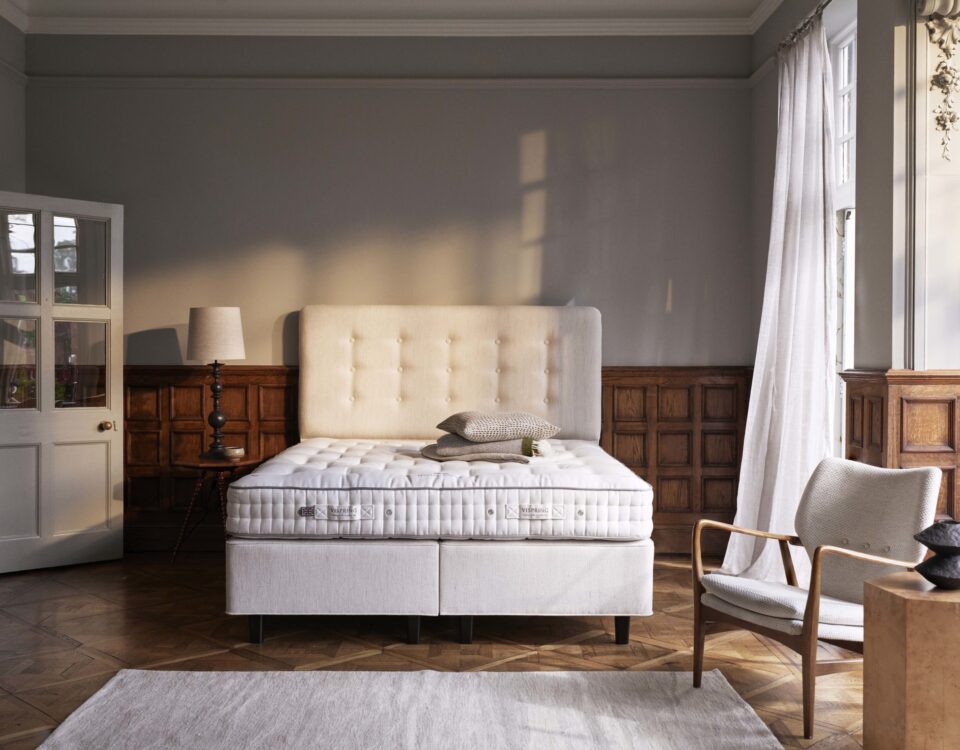Bed Basics: How to compare mattresses
Before you head out shopping for a new bed, make sure you know how to effectively compare mattresses. With all the terminology surrounding mattress marketing (coil counts and torsion grid foundations and a million kinds of foam), it’s hard to know what makes a quality mattress. Well, here’s your guide to comparing apples to apples when you’re mattress shopping. For simplicity’s sake, we’ll stick with innerspring mattresses, since that’s what about 90% of US consumers purchase (as opposed to fully foam mattresses, waterbeds, or air beds).
There are three main components that will help you compare mattresses from different manufacturers: coils, upholstery layers, and foundation. Coils refer to the spring system inside the bed. There are several different ways mattress manufacturers will shape the wire and arrange it within the mattress. Each style of spring has its own benefits and drawbacks. The initial feel of the mattress may not be much different from coil type to coil type, but the lifespan of the mattress and its response over several hours of sleep could be markedly different. You’ll hear some manufacturers talk about their continuous coil and higher coil count, while Simmons mattresses, use a pocketed coil that results in great motion separation. To choose what kind of coil system you want, think about what’s most important to you during sleep. Firm feel? Lots of give? Contoured cradling? Not feeling your partner flop around? (Stay tuned for a post comparing the main types of coil systems in innerspring mattresses.)
Upholstery layers don’t just refer to the quilted finish that you promptly cover with a mattress pad and some sheets. Or wish you didn’t have to cover, like the cashmere on the Beautyrest Black mattress. Upholstery includes the layers of comfort materials between the coil system and the top of the mattress. Here again, you’re faced with a huge number of choices: gel, latex, memory foam, polyurethane foam, or, most often, some combination of these. And again, each type of foam has its pros and cons. Think about how much cushioning you like when you lay down. Do you want to sink a bit, or would you prefer a more solid surface? Also, how hot do you get while you sleep? Some foams are better at breathing and keeping your body temperature stable overnight. Of course, do consider the final layer of fabric. A soft yet durable cover can help your mattress stave off the inevitable wear and tear. (More information to come in another post about types of upholstery layers.)
The foundation refers to the box spring, platform, or grid that supports your mattress. In addition to improving the lifespan of your mattress, the foundation adds to the supportiveness. It displaces weight across the surface of the mattress, so you don’t get the saggy spot where you settle in every night. Box springs are very common, but a more solid wood platform or a wood and steel frame are other options. Consider your bed style when you’re looking at foundations. If your bed is already high, you may want to consider a lower profile foundation so getting into bed doesn’t require pole vaulting. (And, as you may have guessed, there will be another post detailing foundation options).
Mattress shopping can get overwhelming fast. In order to compare mattresses with the best results, make a list of what you want in a bed before you go shopping. Think about what you like and don’t like with your current mattress (or what you liked about it when it was new). And keep in mind that with all the buzz words you hear, it comes down to three basic components: coils, upholstery, and foundation.




